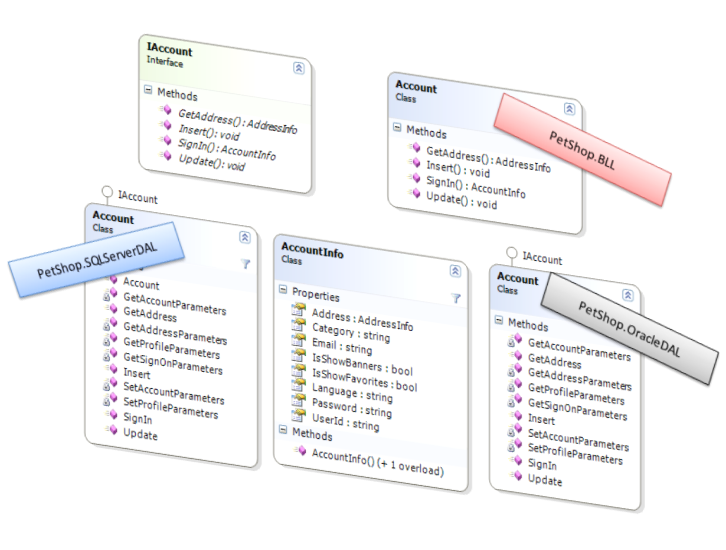I got some feedback about my previous review, that the PetShop 2.0 was recognized as architecturely unsound, and that I should look at version 3.0 of the code, which is:
Version 3.x of the .NET Pet Shop addresses the valuable feedback given by reviewers of the .NET Pet Shop 2.0 and was created to ensure that the application is aligned with the architecture guideline documents being produced by the Microsoft.
I have to say, it looks like someone told the developers, we need an architecture, go build one. The result is... strange. It make my spider sense tingle. I can't really say that it is wrong, but it makes me uncomfortable.
Take a look at the account class, and how it is structured:

Well, I don't know about you, but that is poor naming convention to start with. And I am seeing here an architecture by rote, if this makes any sort of sense.
Then there are such things as:

Which leads us to this:

The MSG_FAILURE is:

I am sorry, but while there was some effort made here over the previous version, I am not really impressed with it. As I said, the architecture is now probably sound, if suspicious because of lack of character, but the implementation is still not really one that I would call decent. I have to admit about a strong bias here, though. I don't like te naked CLR, but the code has missed a lot of opportunities to avoid unnecessary duplication and work.
I have been also asked what I would consider a good sample application, and I would like to recommend Cuyahoga, as the application that probably models my thinking the best. SubText is also good, but it is more interesting case, because I don't like its reliance on stored procedures. Nevertheless, it is a valid approach, and it certainly serving this blog very well.









